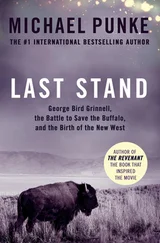Nelson Johnson - Boardwalk Empire - The Birth, High Times, and Corruption of Atlantic City
Здесь есть возможность читать онлайн «Nelson Johnson - Boardwalk Empire - The Birth, High Times, and Corruption of Atlantic City» весь текст электронной книги совершенно бесплатно (целиком полную версию без сокращений). В некоторых случаях можно слушать аудио, скачать через торрент в формате fb2 и присутствует краткое содержание. Жанр: Старинная литература, на английском языке. Описание произведения, (предисловие) а так же отзывы посетителей доступны на портале библиотеки ЛибКат.
- Название:Boardwalk Empire: The Birth, High Times, and Corruption of Atlantic City
- Автор:
- Жанр:
- Год:неизвестен
- ISBN:нет данных
- Рейтинг книги:5 / 5. Голосов: 1
-
Избранное:Добавить в избранное
- Отзывы:
-
Ваша оценка:
- 100
- 1
- 2
- 3
- 4
- 5
Boardwalk Empire: The Birth, High Times, and Corruption of Atlantic City: краткое содержание, описание и аннотация
Предлагаем к чтению аннотацию, описание, краткое содержание или предисловие (зависит от того, что написал сам автор книги «Boardwalk Empire: The Birth, High Times, and Corruption of Atlantic City»). Если вы не нашли необходимую информацию о книге — напишите в комментариях, мы постараемся отыскать её.
Boardwalk Empire: The Birth, High Times, and Corruption of Atlantic City — читать онлайн бесплатно полную книгу (весь текст) целиком
Ниже представлен текст книги, разбитый по страницам. Система сохранения места последней прочитанной страницы, позволяет с удобством читать онлайн бесплатно книгу «Boardwalk Empire: The Birth, High Times, and Corruption of Atlantic City», без необходимости каждый раз заново искать на чём Вы остановились. Поставьте закладку, и сможете в любой момент перейти на страницу, на которой закончили чтение.
Интервал:
Закладка:
The Camden-Atlantic Railroad gobbled up real estate so aggressively that the state legislature adopted a law prohibiting it from buying any more land, but that didn’t stop Richards and Pitney. They promptly formed the Camden-Atlantic Land Company and continued to purchase property. With Jeremiah Leeds gone and his heirs no longer interested in farming, Richards and Pitney were able to acquire most of Absecon Island. All the real estate needed to satisfy the investors was acquired in less than two years, with the Leeds family selling the bulk of their holdings by 1854. Together, the Railroad and Land Companies bought nearly 1,000 acres at prices between $5 and $10 per acre.
While Pitney negotiated land purchases, Richards saw to the construction of the railroad. The original choice as contractor was Peter O’Reilly. Ground was broken in September 1852 but after several months of floundering, it was obvious O’Reilly wasn’t up to the task. Richards decided O’Reilly had to go. He was replaced by Richard Osborne, who had previously managed the Richmond and Danville Railroad. British born and educated, Osborne was a civil engineer trained in Chicago, the boomtown of the 19th century. Osborne was formidable looking, distinguished by his sideburns and mustache, both of which grew down below his chin. He was working in Philadelphia when approached by Samuel Richards to serve as consulting engineer to the Railroad and Land Companies in the development of their bathing village. Osborne knew an opportunity when he saw one and was excited at being on the ground floor of Richards’ venture. He hoped that the raw landscape of Pitney’s island might allow him to carve out a fortune.
Richard Osborne’s first task was to select a right-of-way for the construction of the rail line. It was an uncomplicated matter. He set the course for the tracks in a straight line from Cooper’s Ferry in Camden to the middle of Absecon Island. Osborne and his survey crew mapped the train route directly through the heart of South Jersey’s pine forest. Stagecoach roads and existing rights-of-way used by wagons or horsemen were ignored. The tracks would go around nothing.
Construction of the railroad under Osborne’s direction began in earnest in August 1853. Starting from Camden, trees were cut, hills leveled, and swamps filled as the Camden-Atlantic Railroad chopped its way through the forest. There were no curves in Osborne’s steel ribbons. The only thing that broke the woodlands was the railroad itself. The single most difficult portion in constructing the railroad was over the marshes between the mainland and the island.
The weather that winter had been favorable to work on the railroad, “but in February a storm tide made a clean sweep of the roadbed which had been graded on the meadows.” Osborne’s crew worked for two months to restore the rail line when again in April “a terrible Northeast storm prevailed for a week, flooding the meadows, sweeping away miles of the graded roadbed which was ready for the track and scattering the ties and wheelbarrows for miles along the coast.” Finally, the weather relented and the rail line was extended to the bay across from Absecon Island in July 1854.
At the same time work was progressing on the rail line, the Camden-Atlantic Land Company had Osborne prepare a street plan for Pitney’s beach village. Having acquired nearly all of Absecon Island, the investors were eager to create lots for resale. As he had in drawing the right-of-way for the rail line, Osborne’s map for this new village paid no regard to the virgin landscape. Any physical obstacle in the way of the street lines, such as sand dunes running the length of the island, fresh water ponds, and nesting areas for waterfowl, had to go. Under Osborne’s direction, Absecon Island was cut into neat little squares and rectangles, creating lots ideal for maximizing profits from land sales.
When Richard Osborne unveiled his map of this new seashore town, the words “Atlantic City” appeared across the top on a background of breaking waves. According to Osborne, the investors accepted his suggestion for the name immediately. Hoping to appeal to visitors beyond Philadelphia, the street map assigned each state in the nation its own avenue. Richard Osborne believed that it was this new resort’s “manifest destiny” to become “the first, most popular, most health giving and most inviting watering place” in the country. While he knew Philadelphia would provide the bulk of the visitors, Osborne dreamt that Atlantic City would become a national resort with patrons from around the country.
Opening day for the Camden-Atlantic Railroad was July 1, 1854. The first train, an “official special,” consisted of nine passenger cars and left from the Cooper’s Ferry terminal in Camden. Ferryboats from Philadelphia brought a stream of guests, each with a printed invitation, and hundreds of curiosity seekers who came to see the first iron horse leave for the seashore. “Finally, a bit after 9 A.M., the engine whistle sounded, the iron horse belched a great cloud of black smoke, there was a grinding and creaking—and the train got under way.”
The 600 passengers on board were chosen carefully by Samuel Richards and Jonathan Pitney. They were newspapermen, politicians, and wealthy notables of the day—all having been invited to help in promoting the resort. There were several stops along the way to permit the major shareholders to make speeches and show off their investment to their friends and employees. One of the riders wasn’t terribly impressed with the trip, describing the ride as a “desolate succession of pine trees and cedar swamps,” adding, “No towns or cities were found along the way; only here a woodcutter’s or charcoal burner’s hut and there a rickety saw mill.”
Two and a half hours after leaving Camden the train ride ended at the mainland, and the passengers were taken across the bay in row-boats to Atlantic City. A bridge linking the mainland to the island would be completed several months later. After arriving in Atlantic City, a second train brought the visitors to the door of the resort’s first public lodging, the United States Hotel. The hotel was owned by the railroad. It was a sprawling four-story structure built to house 2,000 guests. It opened while it was still under construction, with only one wing standing and even that wasn’t completed. But by year’s end, when it was fully constructed, the United States Hotel was not only the first hotel in Atlantic City but also the largest in the nation. Its rooms totaled more than 600, and its grounds covered some 14 acres.
Upon their arrival, the resort’s first visitors were treated to an extravagant meal followed by speeches and music. After dinner many of the guests strolled on the beach where they entertained themselves exploring the remains of shipwrecks. Following this private debut, the Camden-Atlantic Railroad was opened to the public on July 4, 1854. For the remainder of the summer, nearly every train that left Camden was sold out.
It was a proud time for Jonathan Pitney. While his profits didn’t begin to measure up to those of Samuel Richards, Pitney had saved himself from obscurity. The railroad made it possible for the populations of Philadelphia and Camden to visit the seashore in a single day without the need or expense of a long vacation. It also fulfilled Samuel Richards and the other investors’ hope of generating a land boom along its route. In less than three years, 15 train stations sprang upon between Camden and Atlantic City. The Richards family sold much of their land and reaped a huge windfall. Land values on Absecon Island skyrocketed. Sand dunes and meadowlands purchased for as little as $5 per acre were resold several years later at prices of up to $300 per acre. Jonathan Pitney never made this kind of money practicing medicine.
Читать дальшеИнтервал:
Закладка:
Похожие книги на «Boardwalk Empire: The Birth, High Times, and Corruption of Atlantic City»
Представляем Вашему вниманию похожие книги на «Boardwalk Empire: The Birth, High Times, and Corruption of Atlantic City» списком для выбора. Мы отобрали схожую по названию и смыслу литературу в надежде предоставить читателям больше вариантов отыскать новые, интересные, ещё непрочитанные произведения.
Обсуждение, отзывы о книге «Boardwalk Empire: The Birth, High Times, and Corruption of Atlantic City» и просто собственные мнения читателей. Оставьте ваши комментарии, напишите, что Вы думаете о произведении, его смысле или главных героях. Укажите что конкретно понравилось, а что нет, и почему Вы так считаете.












